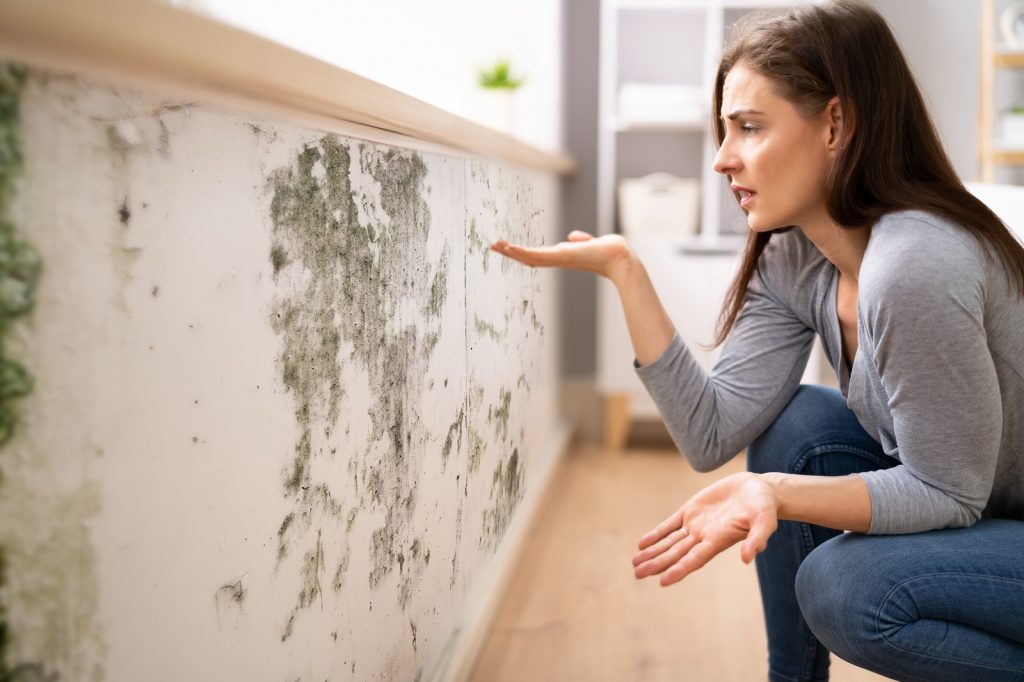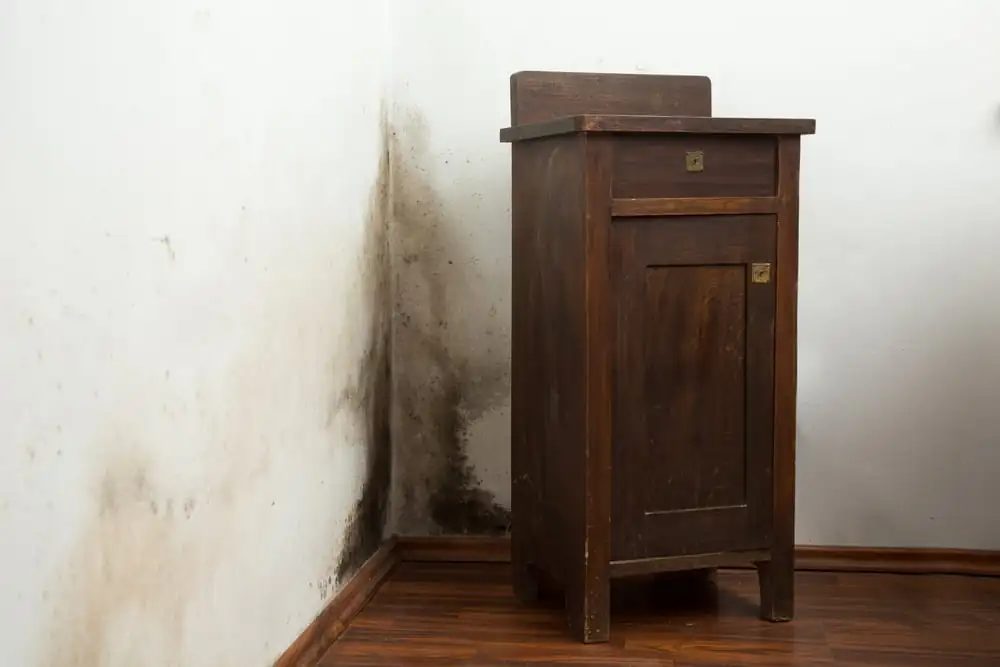Mold often grows out of sight in wall cavities due to water problems like flooding or leaks. Before you know it, it creates a toxic environment in your home, compromising the indoor air. The good news is that even hidden mold leaves behind clues, whether it’s in closets or walls. You can find out if mold is growing in your walls in several ways. Here is how to detect mold in walls.
How to Detect Mold in Walls
Follow the Moisture
If your home has suffered severe water damage, mold will grow in your walls if the water wasn’t removed within 24-48 hours. If the water reached the drywall, the best practice is to cut it one foot above the water line.
Other water problems, like leaking pipes, may also trap moisture inside your walls. Even when leaks are visible, moisture can get inside walls, providing mold a place to grow. Be aware of signs that drywalls are moist such as:
- Water stains
- Dark rings
- Discoloration
- Deterioration like peeling, bubbling, or cracking of the paint or wallpaper
Moreover, if the walls are bowed, bulging, or warped, they most likely contain moisture. Another clue is if the surface of the walls feels wet or damp.
Mold Colors
First of all, if the wall is rotting, it likely has mold underneath it. In less severe cases, mold might not be that noticeable. Inspect the walls and check for mold on walls behind furniture and along baseboards.
Mold can have different colors and textures, so be sure to recognize them. Mold can be black, green, gray, white, or brown. Mold can even appear orange, pink, or purple when it grows behind vinyl wallpaper. Black mold is typically the most dangerous type of mold.
The most hazardous kind of mold is Stachybotrys chartarum, sometimes known as “black mold.” It creates toxins known as mycotoxins, which can cause major health problems, including respiratory disorders, neurological issues, and, in rare cases, death. That is why, if you believe you have black mold in your house, black mold remediation is vital.
Another sign of visible mold is the discoloration of walls, even if it has been painted over. If the water damage inside the walls persists, mold will show signs on the surface.
Musty Smell
If you don’t see signs of mold, but you can smell it, it may be hidden in your walls. A musty smell indicates that mold is growing in your home. The smell of mold feels earthy, like rotting leaves or decaying wood in a dense, damp forest.
If you think there’s mold in your walls, get on your hands and knees and smell the electrical outlets. This might sound silly, but it may help you sense mold if it’s growing within walls. Outlets have better access to the area behind the walls. Thus, smelling them can help identify the mold problem.
How to Prevent Mold in Walls

To prevent mold growth in walls, it’s important to address any moisture issues and create an environment that is unfavorable for mold to thrive. Here are some steps you can take to prevent mold in walls:
- Identify and fix water leaks. Inspect your walls, ceilings, and plumbing fixtures for any signs of water leaks. Leaks should be fixed immediately to stop water from penetrating the walls and producing a damp atmosphere ideal for mold growth.
- Improve ventilation. Reducing humidity and preventing condensation are two benefits of improved ventilation. Install exhaust fans in bathrooms, kitchens, and other spaces that are susceptible to moisture. In humid climates, opening windows and utilizing dehumidifiers can also aid in reducing too much moisture in the air.
- Control indoor humidity. Maintain a humidity level within the home between 30% and 60%. Measure the humidity with a hygrometer and take action to lower it as needed. Air conditioners, humidifiers, and dehumidifiers can be employed to adjust humidity levels as necessary.
- Insulate your walls effectively. By minimizing temperature changes, effective insulation may minimize condensation on walls. Insulation keeps the walls warmer, which lowers the likelihood of moisture buildup and mold formation. To ensure effective insulation installation, seek professional advice.
- Monitor and maintain gutters and downspouts. Gutter and downspout maintenance is important because clogged gutters and downspouts can lead to overflowing water and wall seepage. Gutter maintenance is necessary to guarantee that water is effectively channeled away from your home.
- Use mold-resistant products. Consider using mold-resistant drywall, paints, and other building materials when remodeling or creating new walls. These goods can aid in averting future mold issues as they are made to resist mold growth.
- Keep the walls dry. As quickly as possible, dry the walls completely if they become wet as a result of spills or water damage. To help with drying, use fans, dehumidifiers, and appropriate ventilation.
- Be vigilant about condensation. The presence of condensation on walls, windows, or other surfaces can contribute to the growth of mold. If you observe regular condensation formation, consider taking measures such as adding insulation, enhancing ventilation, or utilizing a dehumidifier to decrease moisture levels.
- Regularly assess and maintain your home. Perform periodic inspections of your residence, with particular attention to areas prone to moisture, like bathrooms, basements, and laundry rooms. Stay alert for any indications of water damage or mold growth, and promptly address any issues that arise.
- Thoroughly clean and dry areas affected by water damage. Cleaning and drying the affected areas as soon as possible after flooding or leaks is essential to stop the spread of mold. Employ appropriate cleaning techniques and consider seeking professional assistance for extensive water damage scenarios.
Remember, mold prevention is crucial for maintaining a healthy indoor environment. If you already have a mold problem or suspect mold growth, it’s recommended to consult with professionals who specialize in mold remediation for proper assessment and remediation.
Call PuroClean for Professional Mold Removal!
Now that you know how to detect mold in walls, you might be wondering how much mold is in your walls. This is where a professional mold removal company like PuroClean comes in. We use professional inspection techniques and tools to determine the existence and extent of mold. For mold removal and water damage repair services, contact your local PuroClean office.







